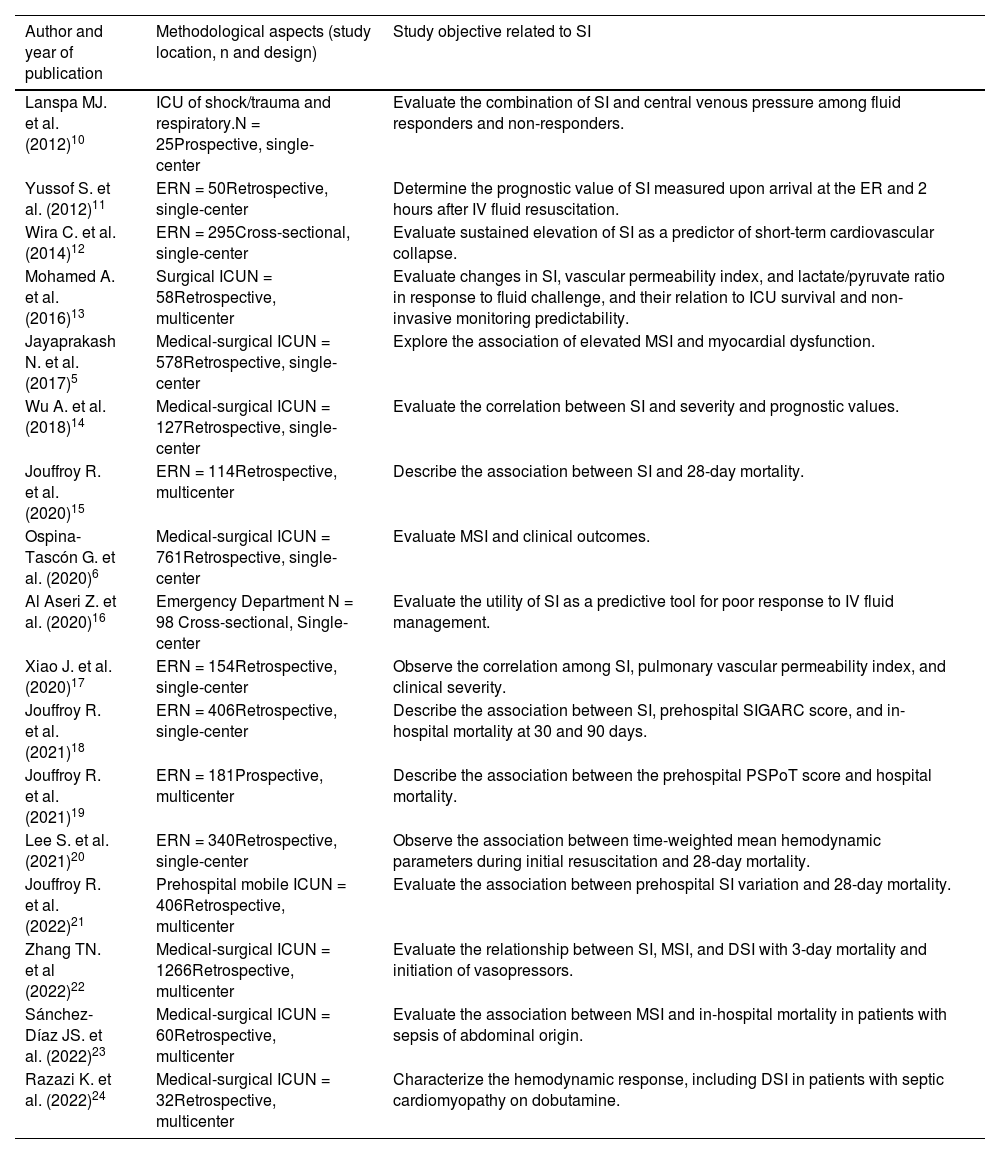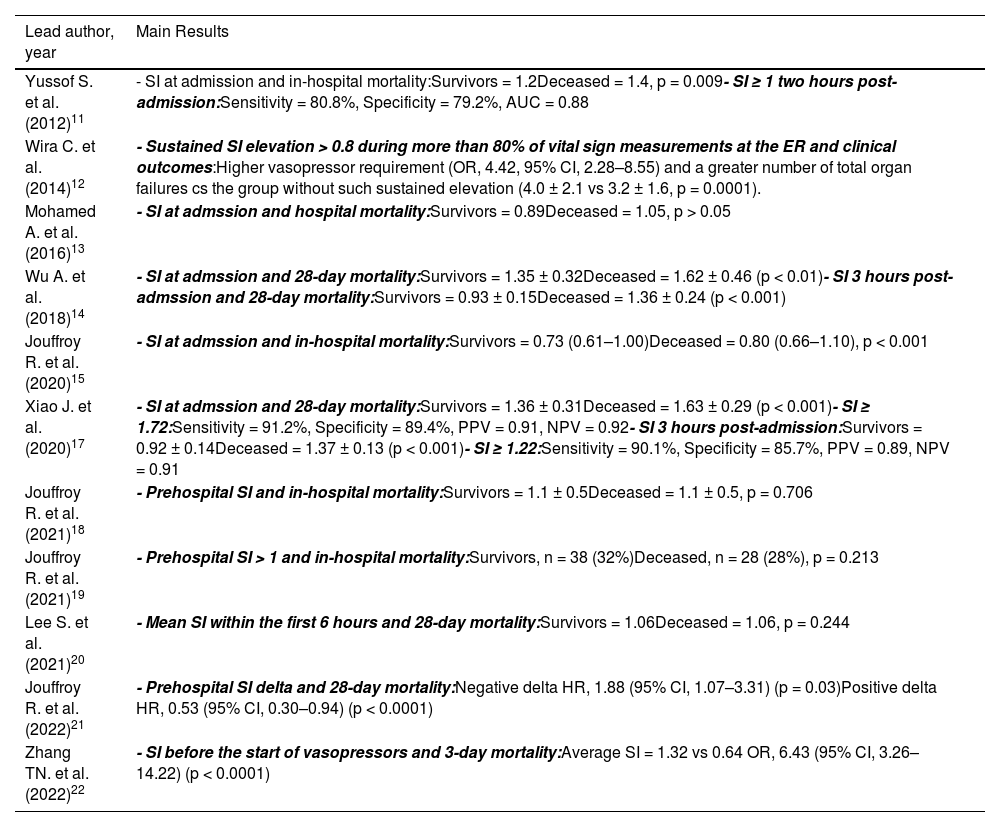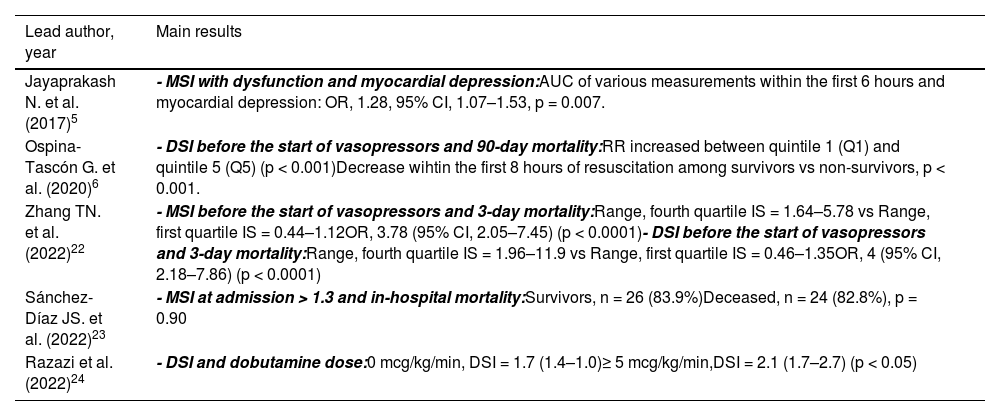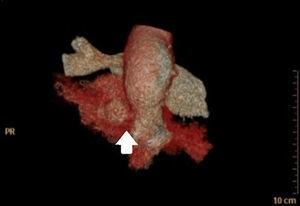To identify published research on the Shock Index (SI) in patients with septic shock or severe sepsis and to describe its main findings and conclusions.
DesignSystematic review of the literature following the recommendations of the PRISMA protocol (Preferred Reporting Items for Systematic Reviews and Meta-Analyses).
SettingsThe following databases were consulted: Pubmed, Embase, Library Cochrane and Lilacs.
PatientsPatients older than 14 years with septic shock. Pregnant women and population with COVID-19 were excluded.
InterventionsStudies reporting measurement of the shock index or its modified variants.
Main variables of interestAbsolute frequencies and relative frequencies were assessed with measures of central tendency and dispersion. Effect estimators (OR, RR and HR) were extracted according to the context of each study.
ResultsSeventeen articles were included, of which 11 investigated the SI as a predictor of mortality. Seven of them found significant differences in the SI when comparing survivors to non-survivors and observed a relationship between the SI evolution and clinical outcomes. Additional research evidenced a relation between the Modified Shock Index and myocardial depression, as well as mortality. Furthermore, they identified a relationship between the Diastolic Shock Index, the dose of administered dobutamine, and mortality.
ConclusionsThe results suggest that both the SI and its modified versions, particularly in serial assessments, can be considered for evaluating patient prognosis. The SI can also aid in determining fluid management for patients.
Identificar las investigaciones publicadas sobre el Índice de Shock (IS) en pacientes con choque séptico o sepsis severa y describir sus principales resultados y conclusiones.
DiseñoRevisión sistemática de la literatura siguiendo las recomendaciones del protocolo PRISMA (Preferred Reporting Items for Systematic Reviews and Meta-Analyses).
ÁmbitoSe consultaron las bases de datos: Pubmed, Embase, Library Cochrane y Lilacs.
PacientesPacientes mayores de 14 años con choque séptico. Se excluyeron mujeres embarazadas y población con COVID-19.
IntervencionesEstudios que reportaran la medición del índice de choque o sus variantes modificadas.
Variables de interés principalesSe evaluaron frecuencias absolutas y frecuencias relativas con medidas de tendencia central y dispersión. Se extrajeron estimadores de efecto (OR, RR y HR) según el contexto de cada estudio.
ResultadosSe incluyeron 17 artículos, de los cuales 11 investigaron el IS como un predictor de mortalidad. 7 encontraron diferencias significativas en el IS al comparar supervivientes de no supervivientes, y observaron una relación entre la evolución del IS y los resultados clínicos. Investigaciones adicionales evidenciaron una relación entre el Índice de Shock Modificado y la depresión miocárdica, así como con la mortalidad. Además, identificaron una relación entre el Índice de Shock Diastólico, la dosis de dobutamina administrada y la mortalidad.
ConclusionesLos resultados sugieren que tanto el IS como sus versiones modificadas, principalmente en evaluaciones seriadas, pueden ser tenidos en cuenta para evaluar el pronóstico del paciente. El IS también puede ser útil en definir el uso de líquidos en los pacientes.
Article
Go to the members area of the website of the SEMICYUC (www.semicyuc.org )and click the link to the magazine.










